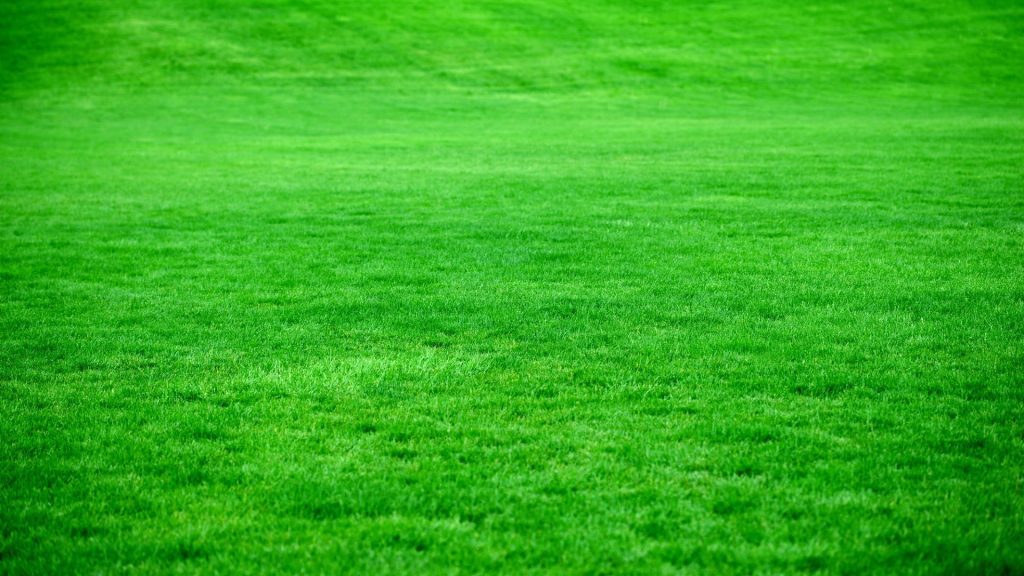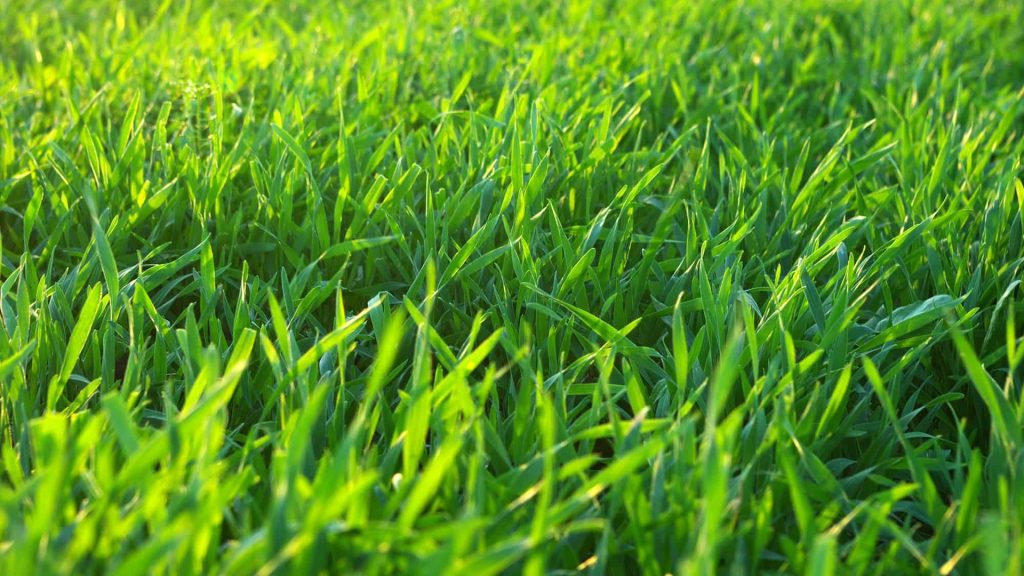
How to Use a Lawn Aerator
Our lawns do a great job of growing with the water and sunlight they get from the outdoors, but sometimes they need a little help.
If the soil underneath the grass has become compacted, it can struggle to access this important stuff, and that’s where a lawn aerator comes into play.
What does a lawn aerator do? The role of an aerator is to break up compacted soil which is done by either puncturing holes or removing soil plugs from the ground. When the soil underneath the grass is looser, the roots are able to access nutrients, air, and water, so it’s an essential part of keeping your lawn healthy and maintained. If you’ve never used a lawn aerator before and are ready to give it a go, we’ve made it easy with this simple guide.
We cover all of the usual questions including what type of aerator you should use, tips for using it effectively, and the possible negatives that arise from this gardening task.
What Does Aeration Do?
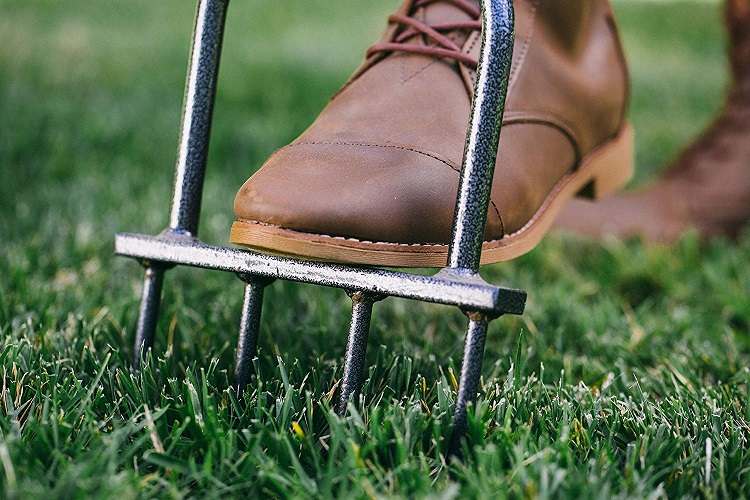
Aeration is a job that not every lawn owner does but should be committed to.
The process of aeration is all about loosening up compacted soil underneath the earth and ensuring that the roots of your grass are able to get the water, airflow, and nutrients that they need to thrive.
The aeration process is a simple but effective one: holes are pierced into the soil which opens the soil up and creates a window around the roots to make them more accessible.
By aerating your lawn, you’re alleviating soil compaction which prevents plants from growing and helping the roots underneath the earth, so it’s an essential job as far as good lawn health is concerned.
The Best Aerators for the Job
The aeration process requires some form of tool to get it done, as you can’t just puncture holes in the soil deep enough with your hand.
There are two types of aerator tools to consider, categorized by the type of hole they create.
Spiked aerator
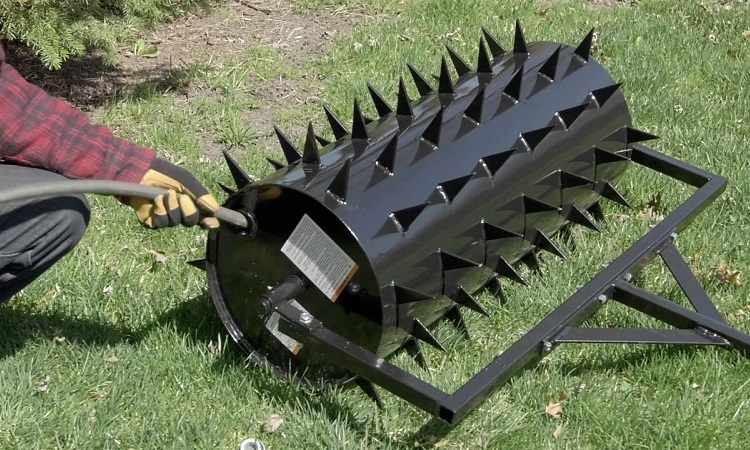
These are aerators that feature several solid spikes that pierce into the ground to allow moisture and air in.
They’re usually the cheaper alternative and easy to operate, but some people believe that they can compact the soil further if not used correctly.
Plug aerator
A plug aerator features spikes as well, but they are hollow, so they’re able to pull out plugs of soil when they come back out of the ground.
This process is referred to as core aeration and for many, it is their preferred method to use.
In addition to the method of aeration they use, these tools are also commonly categorized by their type and how they’re used.
These are the usual types of aerators you can use to break up compacted soil in your garden.
Aerator sandals
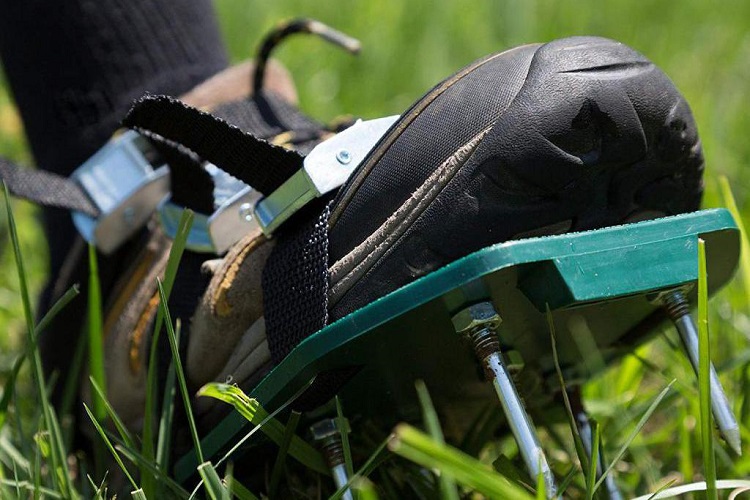
These sandals come as a shoe or as an attachment to be strapped to the sole of your regular footwear. Aeration sandals feature a number of spikes that pierce the ground as you walk with them.
They’re ideal for small to medium-sized lawns but do take some effort to get into compacted soil.
Hand aerators
These aerators are held like a shovel with both hands being placed on the handle and the spikes being forced into the ground.
You can even make these yourself check out our DIY Lawn Aerators guide.
A handheld aerator can be either spiked or with tubed spikes for removing plugs but they’re not suited to anything bigger than a small yard, even if they do guarantee a more precise application.
Rolling aerators
Rolling aerators feature a number of spikes on a rolling cylinder, allowing the operator to roll it over their lawn while it pierces the earth.
These aerators are more commonly the plug type and a good choice if you want to exert minimal effort to get the job done.
Tips for Using an Aerator Properly
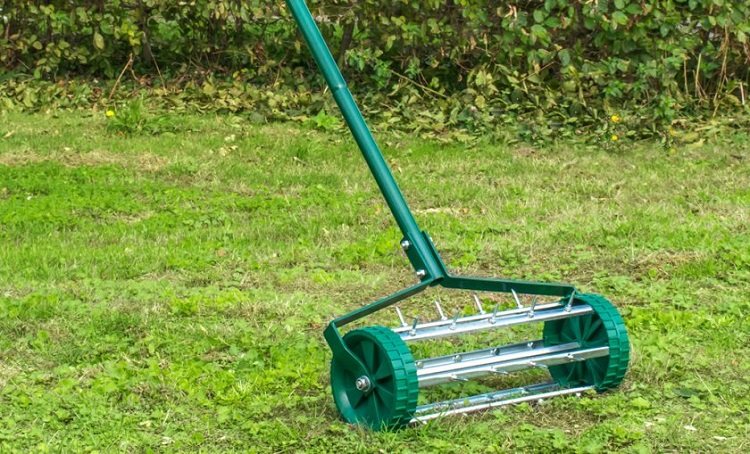
Before you start stomping around your lawn or rolling an aerator up and down, you need to know how to do the job right.
Check out these tips to get some insight into the best way to aerate and what you should avoid.
- Have a plan: Plan out the yard before you begin and mark out any sprinkler systems, invisible dog fences, and underground cables. You’ll need to know exactly what path you’re taking and what you need to be mindful of underneath the ground.
- Test out the aerator: If you’ve never aerated the lawn before and are using a new tool, give it a trial run first. Find an inconspicuous patch of grass to test the aerator out on before you move onto the real deal.
- Make multiple passes: Unless you have an industrial-grade core aerator, you will need to make a few passes on your lawn to ensure it’s been consistently covered. Overlap at least 50% of the previous line that you just made with your aerator so that you don’t miss any of it.
- Space it right: A good rule of thumb to follow is that an aeration hole should be three inches deep and there should be no more than three inches in between two holes. If you’re not sure what your aerator is for, measure the holes it creates when you do a test patch.
- Apply your after products: Once the job is done, you can apply other products, like a pre-emergency herbicide or a top dressing of compost. You should never do this before you start aerating otherwise it can damage the roots and won’t offer its usual protection.
- Know your lawn: The frequency of aeration will depend on a few factors including thatch density, grass type, and condition of the lawn. Assess what your yard needs and come up with a regular schedule you can stick to before it gets out of hand.
- Upgrade your tool: After one session of aerating by hand, you’ll probably be happy to spend and upgrade to a rolling aerator. For those who take their lawn seriously, it’s a smart investment that can save you hours each time you aerate.
The Potential Downsides of Aeration

Aeration is one of the best things you can do for your lawn’s health but there are some negatives to weigh up as well.
Most importantly, timing is everything when it comes to aeration and one of the most damaging things you can do for your lawn is to perform this process too often.
Other negatives worth considering are how much effort this job entails, even if you’re using a rolling aerator or wearing sandals.
The process is lengthy and it can be a strain on your back, so you must commit to a full day to getting it done.
There are other risks as well, including the fact that you could puncture sprinkler systems or cables that are buried underneath the ground.
Furthermore, if you aerate too much, you could be exposed the roots to excess moisture which will lead to fungal and bacterial growth, so you must be cautious.
Free Soil is Happy Soil
There are a number of things that compact our soil, whether it’s the lawnmowers and machines we use to maintain them or heavy foot traffic from our kids and pets.
Whatever the reason, doing what you can to free up the soil and let the grass access nutrients is the best thing you can do for your lawn.
Related Questions
A lawn aerator is just one of a few handy tools that can help you keep your lawn in good condition, as long as it’s used regularly.
To find out more about the other popular gardening equipment and jobs that make up lawn maintenance, read on for some commonly asked questions to get you started.
What’s Better A String Timmer or Lawn Edger?
String trimmers and lawn edgers are used for different jobs on your lawn.
A string trimmer is for cutting the grass in areas where the lawnmower won’t fit, but an edge trimmer is specifically made for trimming edges along sidewalks and driveways so that they look neat.
Is Watering Your Lawn Once A Week Enough?
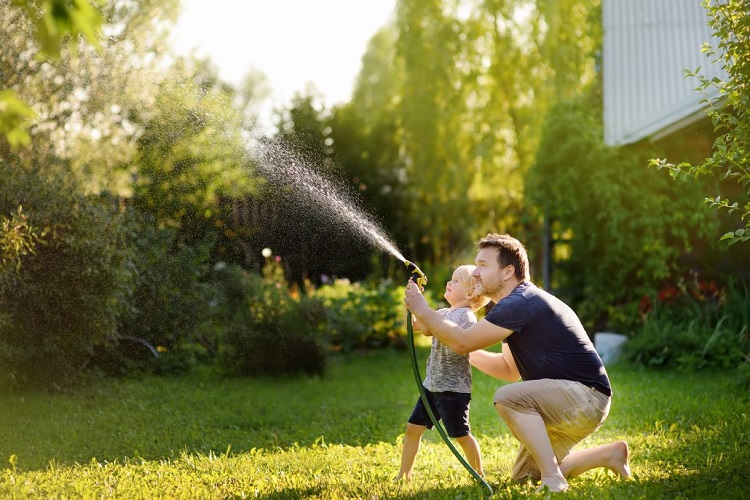
Depending on the type of grass you have and the current weather, most lawns will be happy to be watered once a week to receive at least an inch of water.
However, it’s best to perform a deep watering of between 25 to 30 minutes in each session, rather than breaking it up into shorter intervals multiple times a week.
Are Push Reel Mowers Any Good?
A push behind reel mower has lots of benefits, including a more precise cut, environmentally friendly operating, and a longer lifespan with minimal maintenance.
These manual lawn mowers are effective but might not suit all lawn types and sizes, nor the people who plan on operating them.
Resources:
